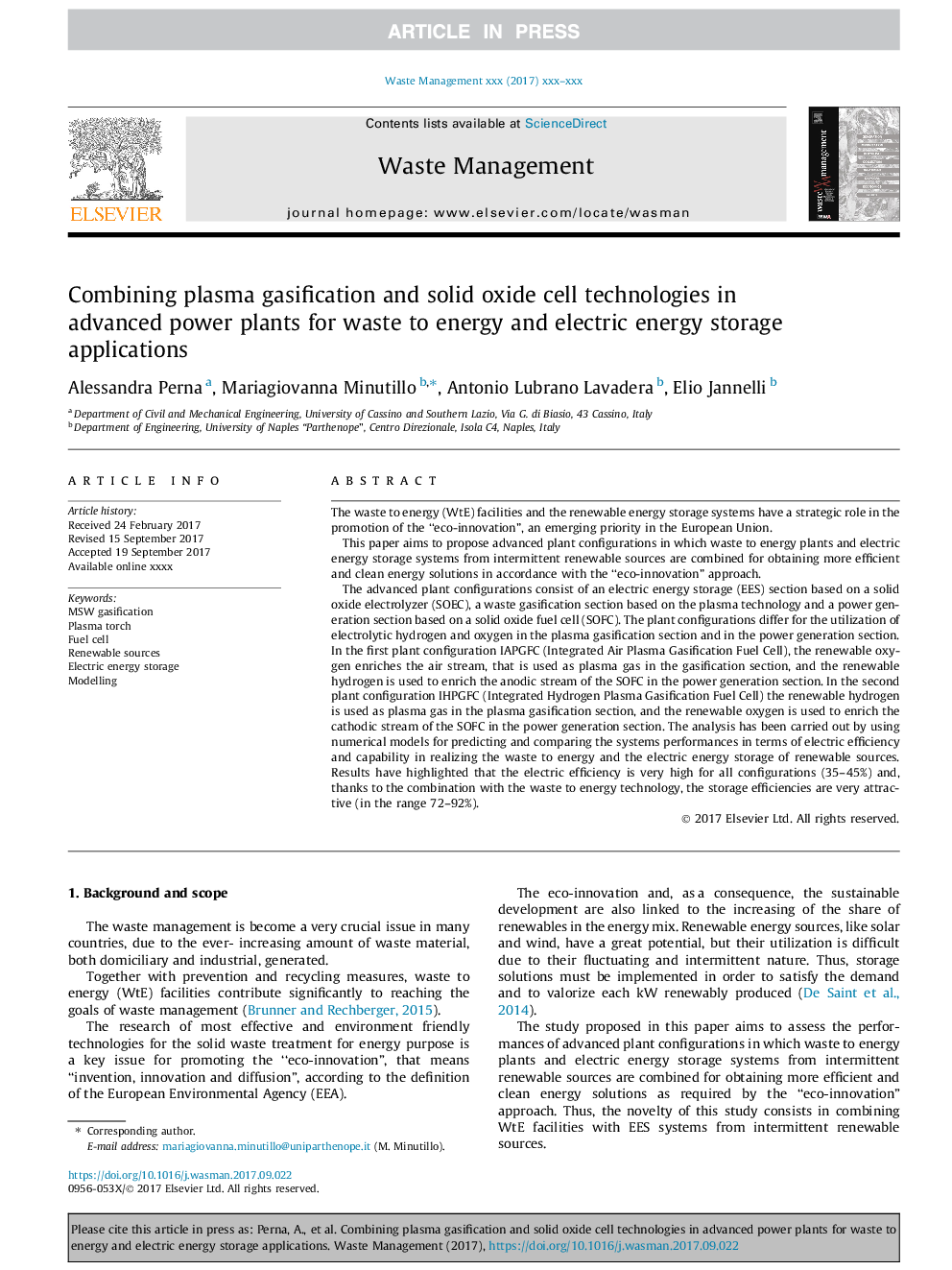| Article ID | Journal | Published Year | Pages | File Type |
|---|---|---|---|---|
| 8869991 | Waste Management | 2018 | 15 Pages |
Abstract
The advanced plant configurations consist of an electric energy storage (EES) section based on a solid oxide electrolyzer (SOEC), a waste gasification section based on the plasma technology and a power generation section based on a solid oxide fuel cell (SOFC). The plant configurations differ for the utilization of electrolytic hydrogen and oxygen in the plasma gasification section and in the power generation section. In the first plant configuration IAPGFC (Integrated Air Plasma Gasification Fuel Cell), the renewable oxygen enriches the air stream, that is used as plasma gas in the gasification section, and the renewable hydrogen is used to enrich the anodic stream of the SOFC in the power generation section. In the second plant configuration IHPGFC (Integrated Hydrogen Plasma Gasification Fuel Cell) the renewable hydrogen is used as plasma gas in the plasma gasification section, and the renewable oxygen is used to enrich the cathodic stream of the SOFC in the power generation section. The analysis has been carried out by using numerical models for predicting and comparing the systems performances in terms of electric efficiency and capability in realizing the waste to energy and the electric energy storage of renewable sources. Results have highlighted that the electric efficiency is very high for all configurations (35-45%) and, thanks to the combination with the waste to energy technology, the storage efficiencies are very attractive (in the range 72-92%).
Related Topics
Physical Sciences and Engineering
Earth and Planetary Sciences
Geotechnical Engineering and Engineering Geology
Authors
Alessandra Perna, Mariagiovanna Minutillo, Antonio Lubrano Lavadera, Elio Jannelli,
